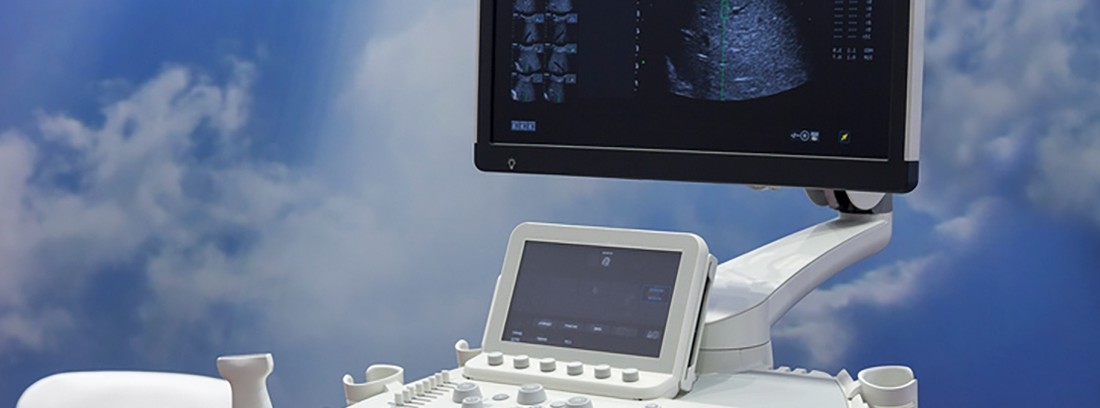Vesico-prostatic and abdominal ultrasound

The image of an ultrasound arises from the application of ultrasoundon the anatomical area under study, the ultrasound machine emits ultrasound waves that by bouncing off the tissue object of the study emits an ultrasound image that will be collected on a monitor connected to the ultrasound machine. The ultrasound images obtained will be collected on the monitor screen, on photographic paper or on a CD.
Depending on the anatomical area that you want to study, ultrasound can have different names, the most common are:
- Breast ultrasound
- Obstetric ultrasound (pregnancy)
- Gynecological ultrasound
- Renal ultrasound
- Testicular ultrasound
The study does not require the use of ionizing radiation(X-ray) nor radiopharmaceuticals.
How is the ultrasound study performed?
The ultrasound study is performed in the ultrasound room or in the. The patient must undress the anatomical area under study; in some cases you will be provided with a gown to cover yourself. It is not necessary to remove jewelry or metal objects as they do not interfere with ultrasound waves.
- On abdominal ultrasound the patient will remain on a stretcher during the study. The doctor will apply a conductive gel over the area to be studied and the ultrasound machine will move over it, indicating to the patient at all times the position to adopt during the study. Once finished, the studied area will be cleaned with a disposable wipe.
- On prostate ultrasound it may be necessary to insert the ultrasound covered with a latex insulator through the anal sphincter (transrectal ultrasound) for a better visualization of the area under study.
The duration of the examination will depend on the anatomical area to be studied and the findings found during it, and may vary from 15 to 30 minutes.
Preparation for the study.
The ultrasound study does not require prior preparation by the patient. Some studies may require special conditions (such as fluid intake prior to the study) that will be indicated by the doctor before conducting the study. The abdominal ultrasoundl may require fasting 6-8 hours prior to the study.
Study risks
It has no risks because it uses ultrasound waves harmless to the patient.
What does the study feel like?
- It is painless for the patient.
- You may feel local cold when applying the conductive gel.
- Some types of ultrasound (transrectal, transvaginal) can cause minor discomfort due to the slight pressure exerted by the ultrasound during its placement.
- The ultrasound study has no contraindications
What is the study done for?
The vesico-prostatic and abdominal ultrasound is performed to rule out bladder pathologies and or to determine the extension, type and size of the possible lesions and thus make an adequate diagnosis to proceed with the treatment that the patient needs.
Dra. Cristina Muñoz Gil Family and Community Medicine Specialist
(Updated at Apr 14 / 2024)